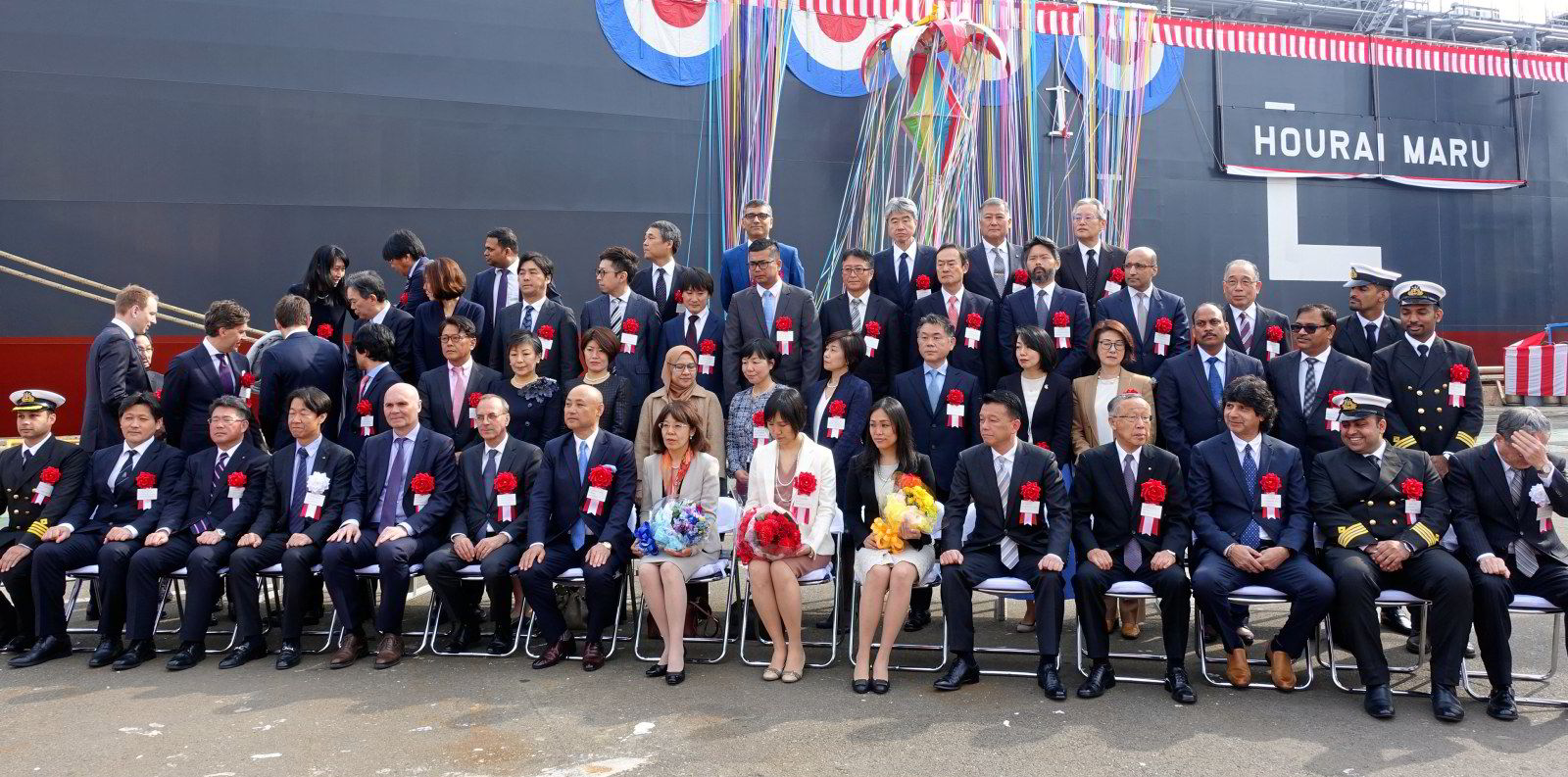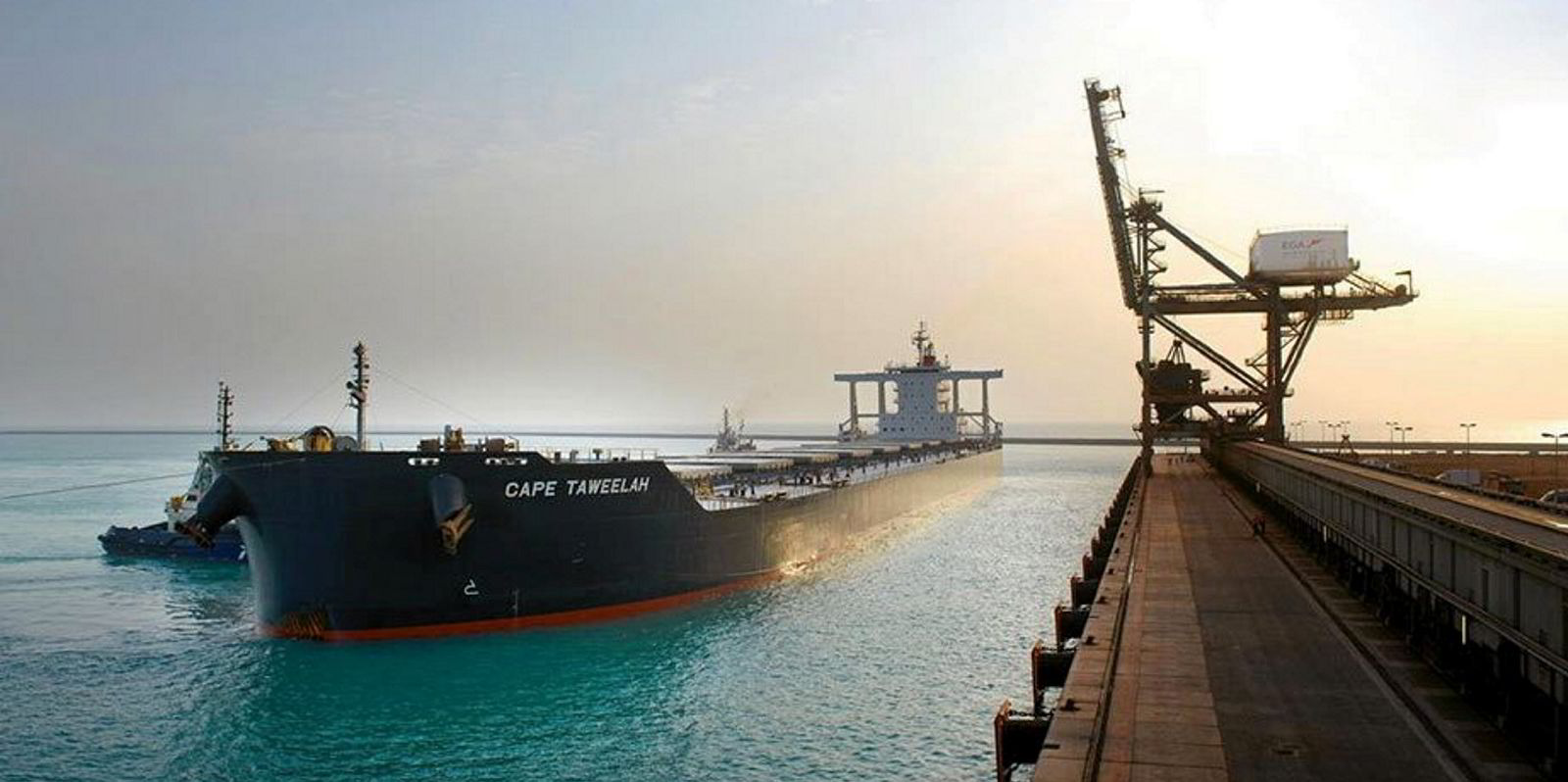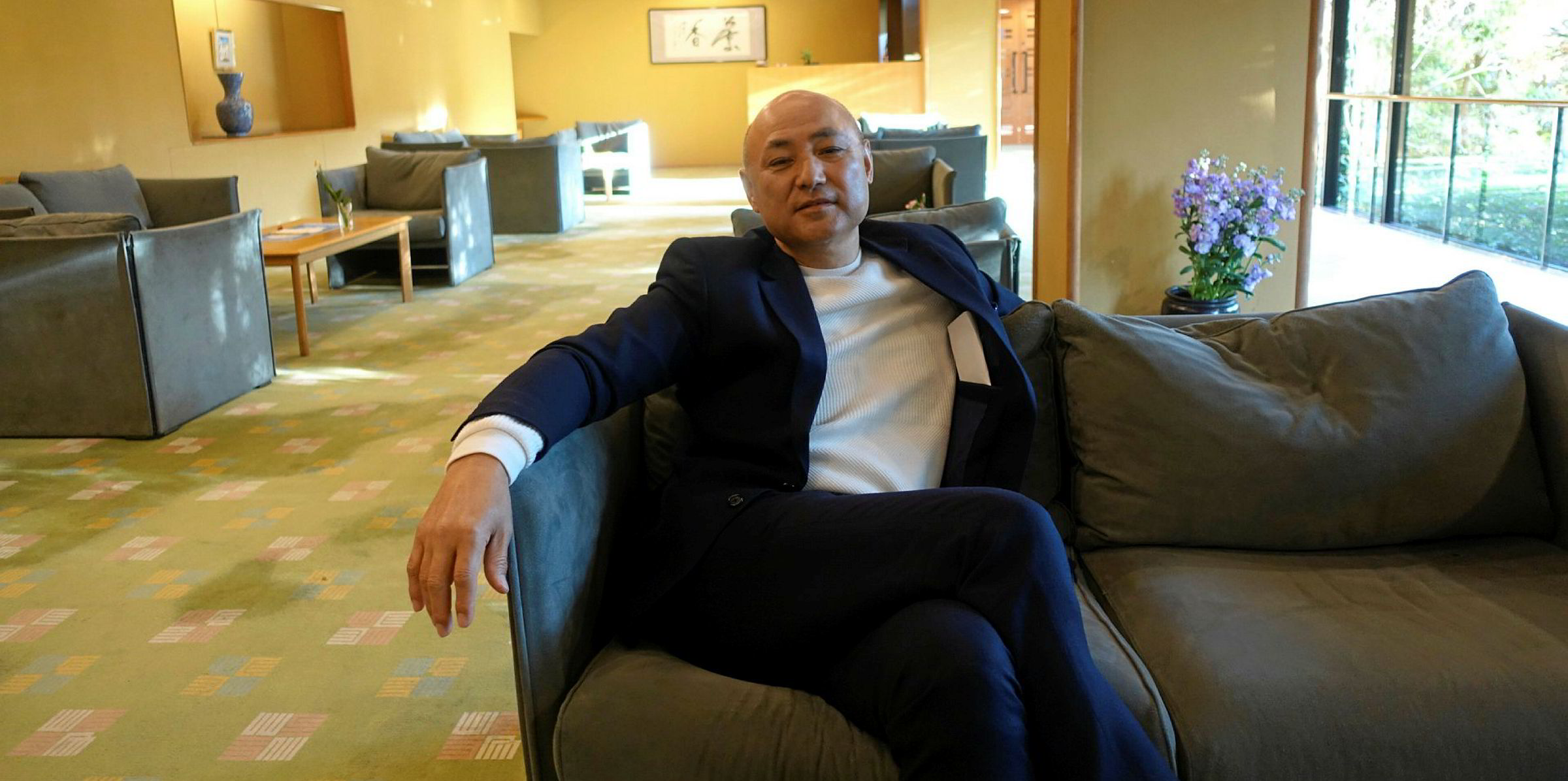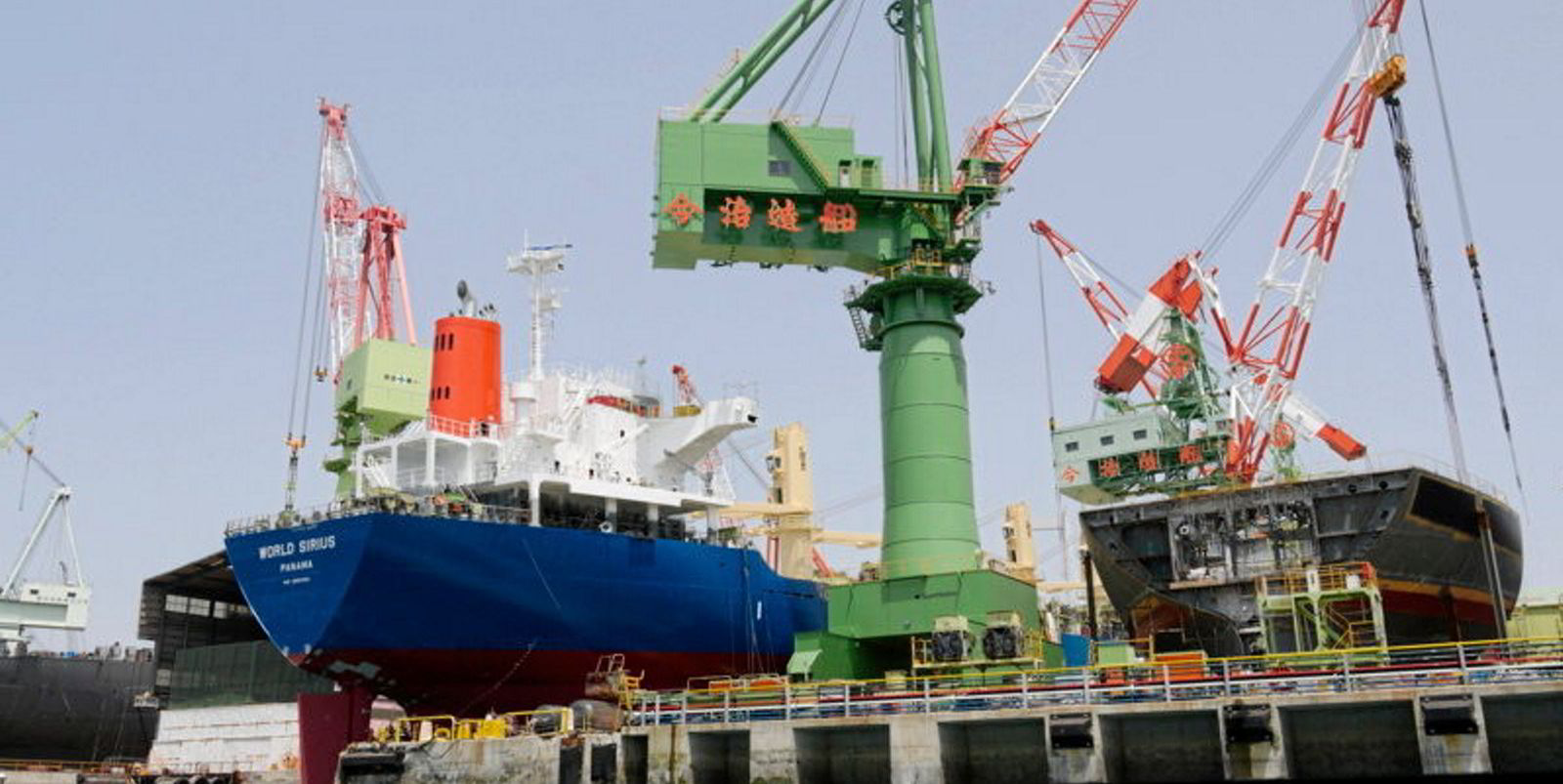Japan's Kumiai Senpaku has made its intention to quit the dry bulk business known, but the rise in the value of bulkers has not tempted the owner to offload its fleet.
Rather, it has rechartered out one of its capesizes for five years after its previous contract expired.
President Nobutaka Mukae told TradeWinds that operators' calls for rate reductions and a switch to short-term vessel fixes — of two to three years as opposed to 10 years-plus — were key reasons why the company had been considering a dry exit.
But he said his company's decision to fix out the 179,200-dwt Kumiai Shagang (built 2011) as opposed to selling it was made on the basis of Japan's tax system and the spiralling cost of newbuildings.
Devastating situations
The South Korean-built vessel has been fixed out to an Asian company for five years, with the charterer holding an option to purchase it when the contract expires. Mukae did not disclose the company, but the capesize has been renamed Berge Dhaulagiri and is listed in Berge Bulk's fleet.
Mukae explained the rationale behind the move.
"We had quite a few companies looking to buy Kumiai Shagang, but we did not sell," he said.
"I am happy to see the rapid rise in the secondhand market and would like to sell our bulker fleet before the tide changes … but we have to consider the hefty 35% tax imposed on sales proceeds of the ships before disposing [of] them."
In Japan, shipping companies that reinvest proceeds from vessel sales in newbuildings are exempt from the business tax.
But Kumiai Senpaku is not keen to order newbuildings in the current market because shipbuilding prices have spiked by 30% to 40% in the past six months.
Mukae described the price rises as "frightening" as he recalled "the devastating situations" that the industry found itself in after the 2008 financial crisis and in the depressed dry bulk markets of 2016 and 2017.
Kumiai Senpaku and subsidiary Kumiai Navigation in Singapore saw their charter contracts axed as the market collapsed.
"At that time, we were paying for high-cost vessels," Mukae said. "I am not going to repeat the same mistakes and I will wait patiently for the right time to invest [in newbuildings], which we hope will happen in two to three years."
And Kumiai Senpaku will not be ordering bulkers, car carriers or containerships when it does move on newbuildings.
"I am not very keen on conventional type of vessels ... [I] would like to build up unconventional ships," Mukae said.
However, the company will make exceptions to invest in niche vessels where a contract is backed by a reputable charterer and the fixture is for more than seven years.
Kumiai Senpaku ordered vessels when the market was at the rock bottom in early 2019 and May this year before the rise in newbuild prices.
Mukae said Kumiai Senpaku and Kumiai Navigation together have seven newbuildings under construction.
Kumiai Senpaku's newbuildings include two asphalt/bitumen carriers and a 50,000-dwt product carrier being built at Chengxi Shipyard and one LPG-fuelled, 40,000-cbm mid-size gas carrier at Jiangnan Shipyard.
Mukae said the asphalt/bitumen carriers — one of 17,000 dwt and the other 37,000 dwt — are chartered out to Gunvor's shipping arm, Clearlake. Details have not been disclosed.
Chengxi is due to deliver the 37,000-dwt tanker, to be named White Pearl, soon and the smaller asphalt carrier in 2023.
The gas carrier newbuilding is charter-free, but the MR tanker at Chengxi was fixed out to a Chinese company for two years when the market was still strong and is slated to be delivered in mid-2022.
"The MR tanker was ordered in 2019, as we were offered an attractive shipbuilding price," Mukae said. "I have no particular preference for the ship and we intend to sell the tanker when the charter contract expires if reasonable capital can be gained."








